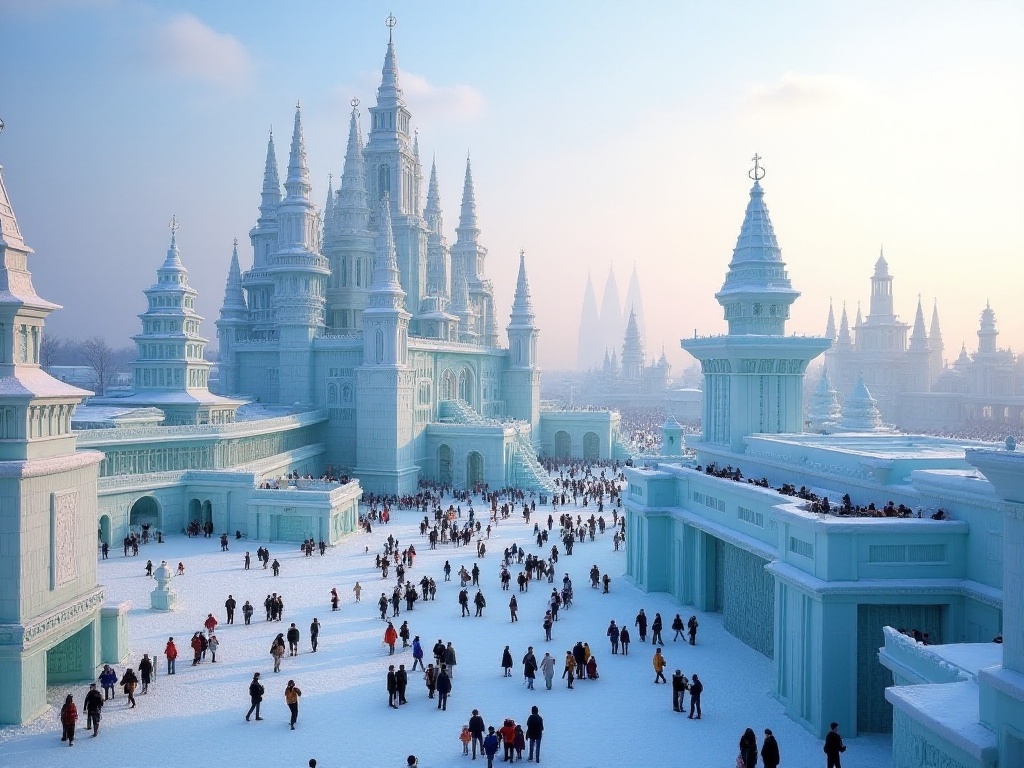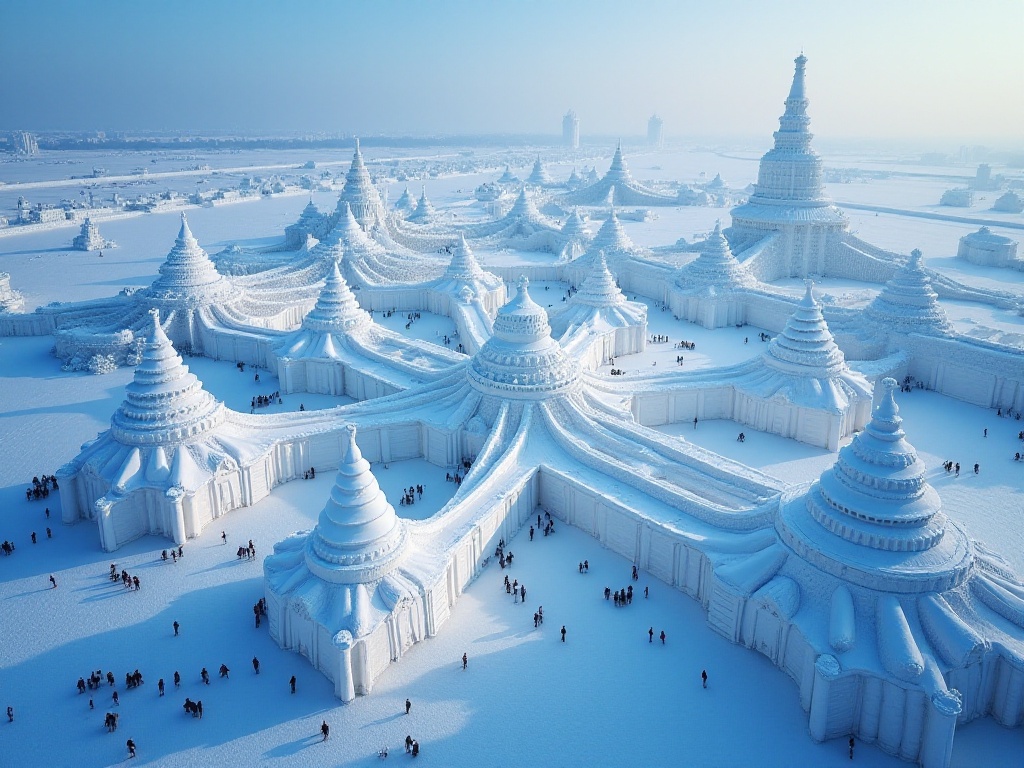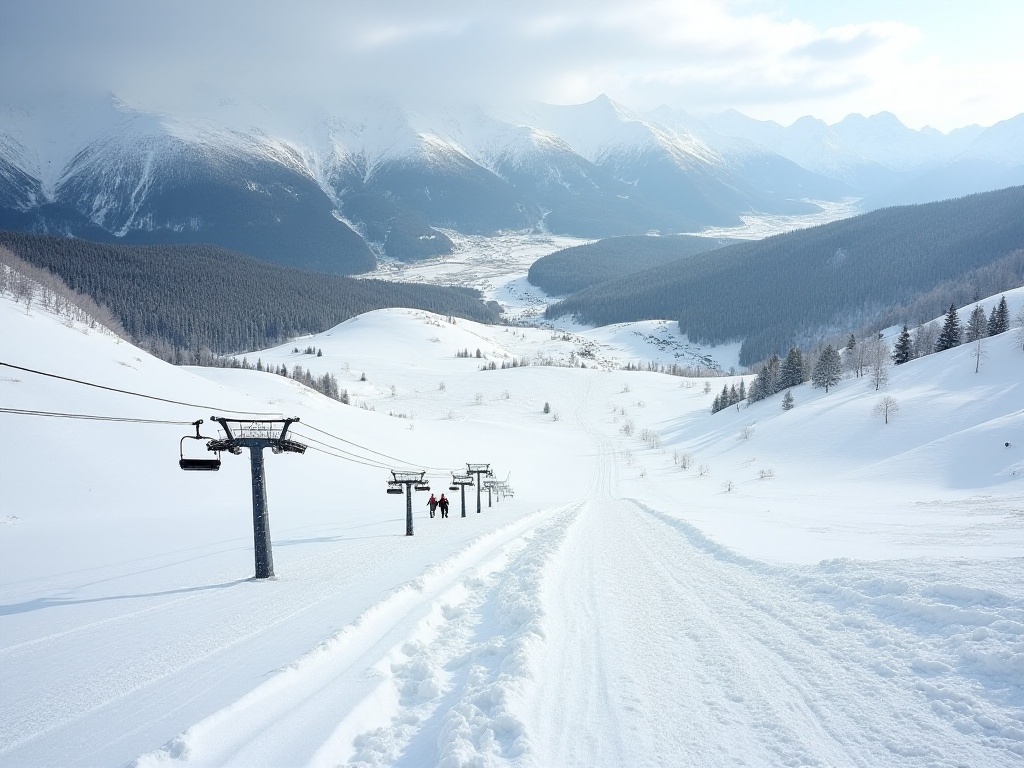Before Departure
This was my first trip to Harbin. As a true southerner, I had no concept of what -30°C weather would feel like. Scrolling through my social media feed daily, I saw beautiful pictures of the Ice and Snow World - the crystal-clear ice sculptures, dazzling colored lights, and friends having the time of their lives made me drool with envy. After much hesitation, I finally bit the bullet and booked my flight.
I did thorough preparation before the trip. First, I went on a crazy online shopping spree: ultra-thick down jacket, thermal underwear, snow boots, windproof gloves, hand warmers - I bought everything I could think of. I specifically chose a bright red down jacket, which would look great in snow photos, and I heard that people in Northeast China love red as it symbolizes festivity.
Did you know? Harbin's ice and snow tourism has become incredibly popular this year. In just 20 days from December 11-31, 2024, the Ice and Snow World received nearly 640,000 visitors, a 20% increase from the previous year. Looking around, there were tourists from all over the country, their various accents making me, a first-time southern visitor, feel quite at home.
Before leaving, I downloaded several weather apps and monitored Harbin's temperature trends daily. When I saw the forecast of -30°C, I was shocked. In my southern city, 0°C is already considered "unbearably cold" - -30°C seemed like a different world entirely. But then I thought, if so many others could enjoy it, how could I give up before even trying?
The Stunning Moments
Honestly, the moment I got off the plane, the cold air hit me like a punch. Despite being wrapped up like a dumpling, I could feel the cold seeping in from all directions. However, after settling in at the hotel and putting on all my gear before going out again, I surprisingly found it quite manageable. Human adaptability is truly remarkable!
When I first saw the Ice and Snow World at night, I was completely stunned. This year's theme is "Winter Dream, Asian Sentiment," and the park used 300,000 cubic meters of ice and snow in its construction, setting a new record. This number might be abstract, so let me describe it more concretely: imagine enough ice to fill 12 standard swimming pools!
The ice sculptures in the park completely amazed me. Can you imagine? These crystal-clear ice blocks shimmer in multiple colors under the lights, looking like a fairy tale castle from afar. Some were traditional Chinese architecture with upturned eaves and ornate beams; others were modern artistic designs with flowing lines and contemporary aesthetics. Most impressive was an Asian-themed architectural complex that recreated iconic buildings from different countries in ice, showing the craftsmen's dedication.
Here, I experienced firsthand what it means for an icy wonderland to rival the beauty of Jiangnan. The park has dedicated photo spots that create movie-quality shots. Wearing my bright red down jacket and posing in front of the colorful ice sculptures, my social media posts got record-breaking likes.
There's serious science behind these beautiful ice sculptures. Harbin Institute of Technology specifically developed smart ice-making equipment that not only improved ice production efficiency but also ensured ice quality. I heard they used special technology to prevent the ice sculptures from melting easily in sunlight. It made me realize how technology is truly everywhere.
The park offers more than just ice sculptures to view; various interactive activities keep visitors thoroughly entertained. Ice slides are one of the most popular attractions - sliding down from height on special mats is both thrilling and fun. There's also ice cycling and ice bumper cars, novelties that southerners rarely experience.
What touched me most was that despite the cold weather, the staff were incredibly warm and friendly. They patiently explained things to visitors, helped with photos, and even thoughtfully provided warming stations in some areas. This warmth made the -30°C cold much more bearable.

Recommended Activities
Since you're already here, you shouldn't just visit the Ice and Snow World. I suggest using Harbin as a starting point to plan a more complete Northeast China ice and snow tour. For example, you can visit Mudanjiang, known as the "Snow City," which launched 15 premium tourism routes this year covering 8 themes, connecting Mudanjiang, Harbin, and the Yabuli Ski Resort.
In downtown Harbin, Central Street is a must-visit spot. The street has many Russian-style buildings and is particularly romantic when lit up at night. There are many specialty shops where you can buy various Russian-themed souvenirs. My favorite was a shop selling matryoshka dolls, each hand-painted with exquisite craftsmanship - perfect for impressive gifts.
Regarding food, my advice is: eat without restraint! The Northeast is famous for its large portions, and everything is delicious. Qiulin Red Sausage, Guobaorou (sweet and sour pork), Northeast Chinese stews, and various dumplings are must-try foods. Special reminder: many popular restaurants require queuing, so plan ahead.
Skiing is a highlight of ice and snow tourism. Yabuli Ski Resort is one of the most famous in Northeast China, with slopes suitable for everyone from beginners to experts. As a skiing novice, I managed to slide down the beginner slope with instructor guidance on my first try. Despite falling several times, it was very rewarding.
Ice and snow tourism is now booming nationwide. Besides traditional northern skiing destinations like Beijing, Zhangjiakou, Jilin, and Changchun, even Sichuan's Shimian County has launched an ice and snow tourism season, creatively incorporating hot springs. Even in the south, indoor ski resorts are becoming increasingly popular. A Wuhan indoor ski resort earned over 20 million yuan in monthly ticket sales, showing people's enthusiasm for winter sports.
For accommodation, I strongly recommend trying specialty hotels. Some hotels are near scenic areas with night views of the Ice and Snow World. Some hotels have Russian-style architecture, making you feel like you're abroad. However, note that room rates are higher during peak season, so book in advance.

Future Concerns
Honestly, as someone who just fell in love with ice and snow tourism, I have some concerns. Climate change is affecting the future of this sport. Milder winters, fewer extremely cold days, and increased rainfall are all affecting the length of the snow season. Some places that were originally suitable for skiing now need artificial snow to maintain operations.
However, globally, the ice and snow tourism market continues to expand. Take Finnish Lapland for example - European tourists increased by 60% from 2015 to 2023. In Rovaniemi alone, there are over 100 Santa Claus-themed activities. Ice hotels, ice bars, sledding, and Christmas markets are becoming increasingly popular. This shows that people's enthusiasm for ice and snow tourism hasn't diminished but continues to grow.
I think this might be the charm of ice and snow tourism. It's not just a sport but a unique cultural experience. In the cold winter, people gather in a snow-white world, experiencing nature's masterful work and a lifestyle different from their daily routine - an experience that no other form of tourism can replace.

Final Thoughts
This trip to Harbin truly made me fall in love with ice and snow tourism. Although -30°C is quite challenging for a southerner, everything becomes worthwhile when you see those brilliant ice sculptures, experience the warmth of northeastern people, and taste authentic northeastern cuisine.
What touched me most was the hospitality of the northeastern people. Whether it was the staff at scenic spots or random pedestrians on the street, everyone was extremely helpful. Once when I was looking for a popular restaurant, an elderly man not only gave me detailed directions but also walked part of the way with me to ensure I wouldn't get lost. This simple warmth represents the most genuine human kindness.
By the way, friends planning to visit Harbin should prepare well in advance. The Ministry of Culture and Tourism recently released 12 winter tourism routes, which you should research beforehand. As someone who's been there, I suggest paying special attention to these points: bring enough warm clothing, especially non-slip shoes; food prices in scenic areas are high, so try small nearby shops; keep your phone warm while taking photos to prevent automatic shutdown; most importantly, maintain curiosity and an adventurous spirit to discover more surprises.
This trip gave me many insights. Travel isn't just about seeing attractions and taking photos, but more importantly about experiencing different lifestyles and cultures. Harbin at -30°C showed me a whole new world, helping me understand what it means for an icy wonderland to rival the beauty of Jiangnan.
Next time, I definitely want to stay longer in the Northeast and explore more places. Maybe visit Changbai Mountain's Heavenly Lake, photograph Rime Island, and challenge myself at more ski resorts. There's still so much to explore in Northeast China's winter!
What do you find most attractive about ice and snow tourism? Is it the dreamlike ice sculptures? The exciting ice sports? Or the warmth of northeastern people? Feel free to share your thoughts in the comments. I'm looking forward to hearing everyone's different travel stories and experiences.
Let's look forward to our next ice and snow adventure! I believe each trip will bring us different emotions and rewards.


